 I keep a tiny book-themed B&B – and I offer my guests fresh fruit salad every morning. Our raspberries are just ripening, and there are only a few home-grown blueberries. I had sliced an apple but felt it needed a bit more interest – so I had a rootle in the depths of the fruit bowl. Out came a passion fruit – and that got me to thinking about characters… Continue reading
I keep a tiny book-themed B&B – and I offer my guests fresh fruit salad every morning. Our raspberries are just ripening, and there are only a few home-grown blueberries. I had sliced an apple but felt it needed a bit more interest – so I had a rootle in the depths of the fruit bowl. Out came a passion fruit – and that got me to thinking about characters… Continue reading
Tag Archives: characters
Dressing the Part
One of the great joys of World Book Day is seeing children (and sometimes brave adults) dressed up as their favourite characters. This year’s wonderful examples made me think more about clothes and stories.
Overdoing it
My glamorous and talented belly-dance instructress, Jenn will tell you that overdoing it is one of my failings. She does an elegant hip drop with languid grace – I do a great dump of a thing more like a cliff collapse. I have a tendency to make up for what I lack in finesse by enthusiasm.
Such exuberance is endearing in a puppy – but in a woman of my years, possibly less so. I am not, however, arguing for half-heartedness in dance or anything else creative for that matter. I passionately believe in embracing things; in involving your core, both literally and figuratively.
But I have observed that I come unstuck in my writing when I spend all my arrows too soon. I throw similes, metaphors and period details all in at once. Maybe there will be a signpost to a later event and a character revelation – all within a couple of paragraphs. Overcomplicated, and worst of all, confusing to the reader.
It’s not that I think readers need to have everything pointed out and labelled – but I make it hard for them to see what is important in a welter of extraneous stuff. Think overenthusiastic tour guide telling you about every architectural phase of the stately home’s building, some juicy anecdotes and a list of owners all at once.
I do it on the minor scale too. A sentence about crossing a bridge in Selchester at first go could well be like this –
Georgiana halted on the shining river-worn cobblestones in front of the five bar tollgate, waiting impatiently for the ancient Bridgekeeper to make his grumpy hobbling way to her.
Overwritten or what.
Now it has to be said that there are genres and styles that are properly more elaborate and intricate than others.
But if the decoration is only there to distract the eye from a bodge, that’s not good.
So in my editing I am endeavouring to locate the one important thing I need to convey in each paragraph – and let everything else serve that. Ideally, that should apply to sentence level too.
Instead of a bottom-of-the fridge stir-fry, I want to create a memorable dish full of flavour – but not too many of them.
‘Non più di cinque’ as the Venetians have it – no more than five
Past and present
Most of my writing thus far could be labelled ‘Historical Fantasy’, I would say. I have had lots of fun and inspiration from visiting the settings of my stories and looking around. I try to get a sense of how that place came to be that way- the story before mine, how the geography evolved, the way it might have been governed – as much physical, political and social background as I can imagine.
But until relatively recently, I couldn’t really deal with the people. I’d go early morning or wait to catch shots without people in them . I avoided them a bit if I’m honest – be a bit shy or perhaps wary.
I had some idea that people then were different – different in a way I could only access through period images and accounts. And there’s clearly a great deal of validity in reading contemporary voices, and looking at what they saw – especially for ‘true’ historical writers.
But I take liberties.
I don’t think there were any selkie colonies between Scarborough and Robin Hood’s Bay in the 60s nor a girl who could talk to stone on the south coast of Sussex in Jane Austen’s time. Yet there can be in my head – and through the page – in my readers’ heads.
Understanding this, and accepting that we can only imagine people through what we experience now, has made me much happier to move characters about in time. Years ago as a schoolgirl, I remember seeing some of Holbein the Younger’s drawings. I’ve never been a fan of the Tudors – but those drawings fascinated me. They were ‘just like real people in Tudor costumes!’ I recall thinking.
So now, if I’m in Chichester and I see a huge bloke walking with his legs wide apart to accommodate the movement of his belly like draymen used to roll beer barrels to pub cellars – well, I think ‘you’d fit in well in Selchester’s less reputable streets’. Or I see a girl waiting, shifting her weight from one foot to another, making a pattern on the flagstones like choreography – I wonder if she might anticipate the quadrilles at the Solstice Ball if I slide her back to the winter season 1809.
I reckon it could work the other way too.
Could this woman fit in a contemporary drama?
Perhaps not – but how about this one?
(If you like this pair, there are more here on the Telegraph website – I am indebted to Caroline Lawrence and The History Girls for this)
So what do you think – am I right to mash-up people from different eras – or are people so shaped by the period they live in, it’s just plain wrong?
Principal Boys
Now I am something of a feminist in case you didn’t know, Dear Reader – but I do love a Principal Boy. I love a girl in britches. I always fancied the Prince in the Panto, and any story where the girl dresses up as a boy and gets away with it, gives me great pleasure.
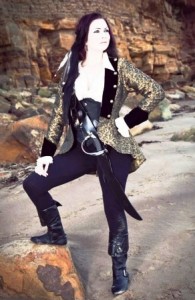
What a pirate! ( Jacket from The Dark Angel)
There’s the irrepressible Linnet in The Children of Green Knowe playing at being a choirboy, Jo March acting in Little Women, Celia Rees’ Sovay – a highwaygirl and of course, most of the cast of Terry Pratchett’s Monstrous Regiment.
I never knew George out of The Famous Five books – but I would have loved her. Likewise Mulan and Tamora Pierce’s Alanna . I was a bit of a tomboy – having to be forcibly made to wear a frock, turfing my dolls out of their pram and using it to carry bricks, and jousting with the clothes pole.
I have to admit I was easily hoodwinked. I had no idea about the central character in The Turbulent Term of Tyke Tyler ( which I still love) and honestly, it came as a great and glorious surprise to me when Dernhelm took off ‘his’ helmet in The Lord of the Rings. It still moves me every time I read it.
I really don’t want contemporary girls to think they have to be boys in order to have autonomy.(See my previous post and this splendid one by Katherine Langrish). But in historical fiction and fantasy, it’s a way for our heroines to get out of the home – and it’s such great fun. There’s something about the sheer audaciousness of it.
And in my case, I identified more with Robin Hood or The Lone Ranger or Ivanhoe or my Dad than my stay-at-home Mum. That probably speaks volumes about me. I’ll end with Gandalf speaking about Eowyn to her brother Eomer:
but she, being born in the body of a maid, had a spirit and courage at least the match of yours.
I think that’s it – spirit. Girls in britches embody courage for me.
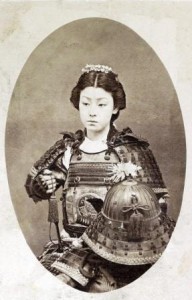
Female Samurai courtesy of Retronaut
Rescuing the Heroine
This post has been partly inspired by the excellent Katherine Langrish and her post Fairytale Princesses: tougher than you think. I can only agree: what I learned from traditional stories was that kindness and effort brought you more success than vanity and pride. So I don’t want to rescue any of those heroines myself – just the term.
That’s why I winced when I read Kate Mosse refer to ” female action heroes.” In fairness it was in a perfectly reasonable piece asking for more active central characters to be female. I am unlikely to disagree with that. (But oh, the irony – if you read the piece via Mail Online there is article after article defining women by their looks down the side bar.)
There needs to be equality. There needs to be a balance of protagonists who are girls or women. Have a look at picture books. Really look at them. The apparently gender neutral use of animals often masks the presumption that the lead is male.
I think the word ‘hero’ does that – assumes male is the only important way to be.
Not books, I know, but in an idle moment at Budapest airport I took a look at some toddler toys (British by the way). Lovely primary colours, diggers and dumpers tractors and so forth (some of my favourite things). Out of twenty named characters, three were female.
We seem to have end up back at the Smurfette Principle – if something is marketed at boys, or meant to be unisex, girls will have only a token representation. Girls are ghettoised. In pink.
And don’t get me started on pink Lego.
So it really is important that half our central characters are female – with lots of agency. I would also argue it’s important you make sure your secondary and minor characters are balanced too. I’ve found myself putting too many males.
But our heroines should not just be blokes with breasts.
Lara Croft won’t do. She’s just eye-candy for boys.
Katniss Everdeen is better. Though I wish the trilogy hadn’t dwindled to that defeatist ending – this is the Katniss I wanted:
(It gets me every time)
We will always need more Lyra Belacquas, more Jane Eyres, more Pippi Longstockings, more Tiffany Achings – and my colleagues provide some amazing female central characters. Some full of gusto and yet feminine.
Just don’t call them ‘heroes’.
Rather wince than die
“Will you tell me my fault, frankly as to yourself, for I had rather wince, than die. Men do not call the surgeon to commend the bone, but to set it, Sir.”
Emily Dickinson to mentor Thomas Wentworth Higginson
I have been thinking a great deal about editing this last week. My story has had its requisite six weeks in a metaphorical drawer and now I am writing with the door open (see Stephen King’s marvellous ‘On Writing‘).
It makes me anxious.
I am fortunate enough to be working with a well-established editor with a great reputation. As a relative beginner, that both helps and worries me. Honesty makes me admit I am shy of letting anyone see what a hash I’ve made on my own. I’m back at school, covering up my misspellings, crossings-out and rubber smudges.
I’ve been advised to focus on what children will respond to most, to plunge the reader straight into a key event, so they know immediately something that I had held back.. This bothers me: I want to shy away from showing my ‘best bit’ too soon, I want to lead up to that ‘ta-daah’ moment. Perhaps I think I can’t follow the reveal, that I will have spent all my dramatic capital.
 Also I worry that the reader won’t have had time to get to know Georgiana. Why should they care about her and her strange powers over stone if they haven’t spent time with her to begin with?
Also I worry that the reader won’t have had time to get to know Georgiana. Why should they care about her and her strange powers over stone if they haven’t spent time with her to begin with?
In my more dismal moments, I imagine my romping girl morphing into a Lara Croft form, albeit in Regency costume. She becomes a figure in a game-play, dodging over the rooftops of Selchester, whom the reader inhabits but doesn’t engage with.
But I fret that I could end up with a story with too much action, too much attention to design detail (I do know the City-on-the-Sea awfully well) and too many special effects – and not enough depth. I see it with layers, like those cut-away drawings of what’s beneath your feet – can I convey those layers and keep the narrative drive?
 My more sensible side says listen to the industry professional, go with what is suggested and trust you can do it. You’re most likely to be imagining half of these concerns. And after all, it’s much better to be published and be read than not.
My more sensible side says listen to the industry professional, go with what is suggested and trust you can do it. You’re most likely to be imagining half of these concerns. And after all, it’s much better to be published and be read than not.
The upshot of all this wibbling* has been to make me think really hard about my non-negotiables. I made myself jot down which aspects of the original draft were essential from memory – to see what sticks. These are the core DNA of Georgiana’s story, but I have to accept that someone else might know better how to bring it out into the world. After all, midwives know more than first-time mothers about birth.
Does anyone care to share their advice with me on this process?
* I am indebted to Jon Mayhew for this delightful word.
Spring Clean
When I returned from my wonderfully stimulating and exhausting weekend in Frome at the Golden Egg Academy, I started work immediately – on preparing my house for bed-and-breakfast guests. I had a photo-shoot scheduled for Tuesday morning courtesy of Airbnb.
What, you might well ask, has that got to do with writing?

Mug shot courtesy of The Literary Gift Company
More than I thought at first.
One task was clearing out the clutter. Getting shot of the bits and bobs that got in the way so that the potential guests could see what they were getting easily. It needed to be clear and clean and suited to the people who liked that sort of thing.
Of course, it was hard to wang stuff out. I am temperamentally averse to disposal. Ideologically too – though handing stuff over to charity shops soothed those qualms. I had to get over some of my sentimentality and clingishness. I can’t say I have entirely triumphed – there are cupboards upstairs bursting with that-which-might-come-in-useful-one-day.
But I had to steel myself, to try and look at my rooms with a dispassionate eye. The tired and the sad had to go – because they got in the way of what I was trying to do. Likewise, I arranged things to make it look good in the photographs. There’s an element of the stage set here, the use of props to suggest the atmosphere I wish to convey – a little cynical, perhaps.
You can see the parallel, I suspect.
The crucial, though not the only, learning point of my time at Imogen Cooper’s lovely house was identifying the core of my novel that would appeal to my intended readership. That is what I have to de-clutter. I need to strip away all the extraneous tat – and even the really lovely writing – that doesn’t make it clear, clean and suited to readers who like that sort of thing. I have to chuck out the verbal chintz.
To use an old Yorkshire expression, my novel needs a ‘good bottoming’ – it needs sorting out – or ‘fettling’ from the bottom up. And it’s no good being half-arsed about it (pun intended). I shall have give it a proper seeing-to.
On with the metaphorical rubber gloves, then.
Chuck chuck chuck chuck chicken…
…lay a little egg for me.
Tomorrow finds me on a train to Frome in Dorset before I attend a Golden Egg Academy workshop on Saturday & Sunday. I’m making a day of it and intend to explore a wee bit. Changes of scenery can often lead to new inspirations – not that I’m short of anything to write about but a little prompt whilst between major works-in-progress keeps the creativity ticking over nicely.
I’ll be sharing accommodation with my www.seamagic.org pal Claudia Myatt – so an exchange of sea yarns will be going on, I suspect. It will be great fun to meet up with other writers for young people too – if nothing else, I will find that stimulating.
However the biggie is help sorting out the stack of tamboured muslin, talking gargoyles and civic corruption which is Georgiana & the Municipal Moon. I think you’d have to envisage my first draft as a cabin trunk jammed full of grubby little scene oddments, faded images of neo-Regency life, salt-stained maps of Selchester, the City-on-the-Sea, and the odd transcript of curious dialogue. It seems as if it should all fit together somehow – but I need some serious help putting my scrapbook together.
I am both nervous and thrilled to have Imogen Cooper take my story seriously. I want all the help I can get to make it work the best I can. There is a core, like the spine formed early on in an embryo that I can’t or won’t change, but otherwise: whatever it takes to tell the story.
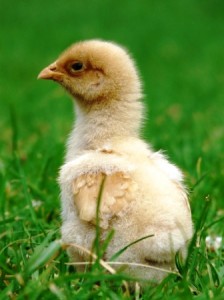
PHOTOGRAPH BY ABCLADY http://www.flickr.com/photos/abclady/
To be continued…
All wound up
This will be a short post. I am off to Seahouses, Northumberland at silly o’clock tomorrow morning.
As you may remember*, I was long-listed for the Mslexia Children’s Novel Competition back in October. In theory I should hear tomorrow if I’ve been short-listed – but I will be on a plane. Then I will be singing with the Unthanks – maybe in Bamburgh Castle if I’m lucky.
It has astonished me how nervy I’ve been about this. Jittery even. I don’t mean the singing -I’m hoping that might help. Not the best frame of mind when attempting to edit an 86k fantasy. I am all editorial fingers-and-thumbs.
Does everyone else get all jumpy about such things – or is it just me?
*Brownie point if you did.



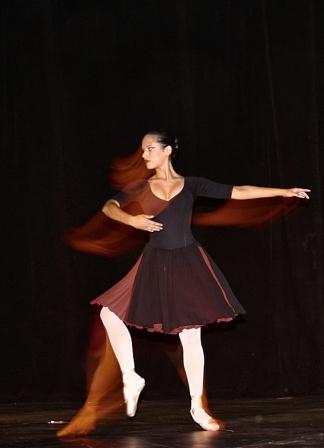




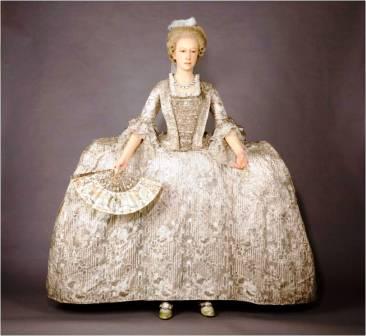
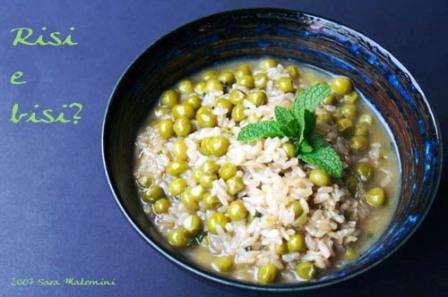

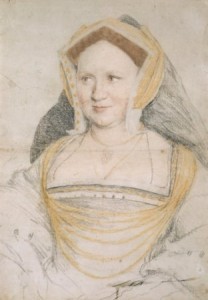




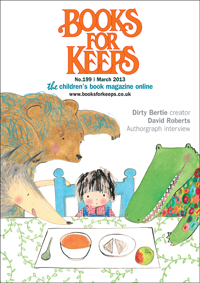
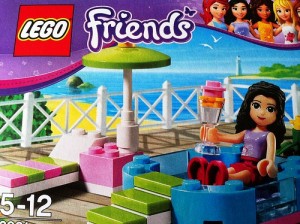

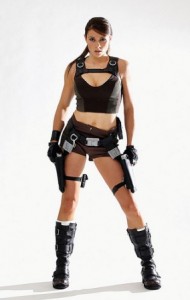





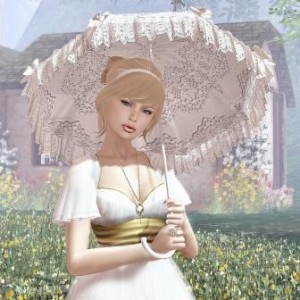








![[Two women dancing in ruffled costumes and hats]](http://kmlockwood.com/wp-content/uploads/2013/03/Dancing-with_delight_co_Snapshots_of_the_past-214x300.jpg)



